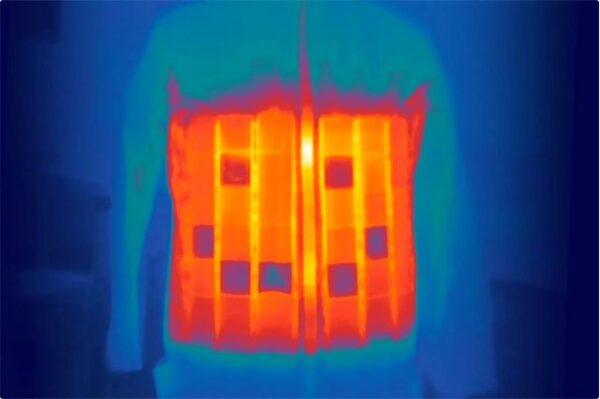In a groundbreaking revelation, British scientists from the University of Manchester, in collaboration with Vollebak, have unveiled a revolutionary piece of technology: an invisibility cloak that harnesses advanced material science to bend the laws of physics. Unlike fictional representations in movies, this cutting-edge thermal camouflage jacket is poised to transform military, surveillance, and even fashion industries.
A Leap Towards True Invisibility
The latest breakthrough in material science has led to the development of an invisibility cloak that operates by manipulating thermal radiation, making objects undetectable by infrared cameras. This technological marvel does not work by bending visible light but instead renders the wearer invisible to thermal detection devices. This could revolutionize military applications, allowing soldiers to evade detection in combat zones and setting a new standard in stealth technology.
How the Invisibility Cloak Works
Unlike traditional camouflage, which relies on colors and patterns, this innovative invisibility cloak operates on the principles of thermal regulation. The prototype consists of 42 graphene panels, each layered with 100 ultra-thin sheets of graphene. Graphene, a single layer of carbon atoms arranged in a honeycomb lattice, is renowned for its extraordinary strength, conductivity, and flexibility.
Each segment of the jacket can be individually controlled through a complex network of gold and copper wiring. By adjusting the electrical voltage, the cloak can modify the thermal signature of the wearer. When activated, it effectively mimics surrounding temperatures, making the wearer undetectable to infrared cameras and thermal imaging devices.
Graphene: The Supermaterial Powering the Future
At the heart of this invisibility breakthrough is graphene, a material that has been hailed as one of the most versatile and promising nanomaterials of the 21st century. Its unique properties make it a critical component in next-generation technologies, including quantum computing, biomedical sensors, and high-performance electronics.
Graphene’s thermal conductivity allows precise temperature modulation, ensuring that specific regions of the cloak can remain cool or warm as needed. This dynamic temperature adjustment is key to fooling heat-detecting surveillance systems.
Military and Tactical Applications
One of the most significant potential applications of this invisibility cloak is in defense and security. Military personnel operating in hostile environments can use this technology to evade enemy surveillance drones, infrared scopes, and heat-seeking devices.
This cloak could also prove invaluable for covert operations, allowing personnel to navigate enemy territory without detection. Additionally, search and rescue teams could use modified versions of this technology to protect individuals from extreme temperature conditions.
Commercial and Civilian Use Cases
While the initial development is focused on military applications, the potential for commercial use is undeniable. The ability to regulate body heat in extreme weather conditions makes this material an excellent candidate for advanced outdoor gear, smart textiles, and high-performance sportswear.
In medical applications, the temperature-sensitive graphene layers could help monitor and regulate body heat, providing new solutions for fever detection, hypothermia treatment, and wearable health monitoring devices.
Challenges and Future Prospects
Despite its promising potential, the graphene-based invisibility cloak faces several hurdles before it can become widely available:
- Energy Consumption: The requirement for precise voltage control across numerous graphene segments demands efficient power management systems.
- Production Costs: Graphene is still an expensive material to mass-produce, making large-scale adoption economically challenging.
- Durability and Wearability: While graphene is lightweight and flexible, integrating it into comfortable, everyday clothing remains a challenge.
However, researchers believe that with continued advancements in nanotechnology and material engineering, these issues will be overcome. The development roadmap suggests that within the next 5 to 10 years, the first consumer-ready versions of this thermal invisibility jacket could hit the market.
The Dawn of Next-Generation Stealth Technology
The discovery of graphene-based cloaking technology marks the beginning of an era where invisibility is no longer just science fiction. As researchers continue refining and improving this state-of-the-art material, we move closer to a future where true stealth technology is within reach.
Whether in defense, emergency response, or everyday applications, this invisibility cloak is set to redefine the boundaries of what’s possible in material science and wearable technology. As the technology matures, we can expect to see innovations that will transform industries and reshape the future of concealment and camouflage.











